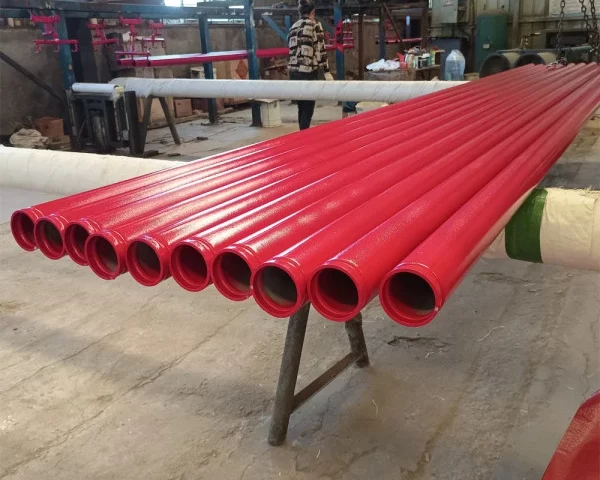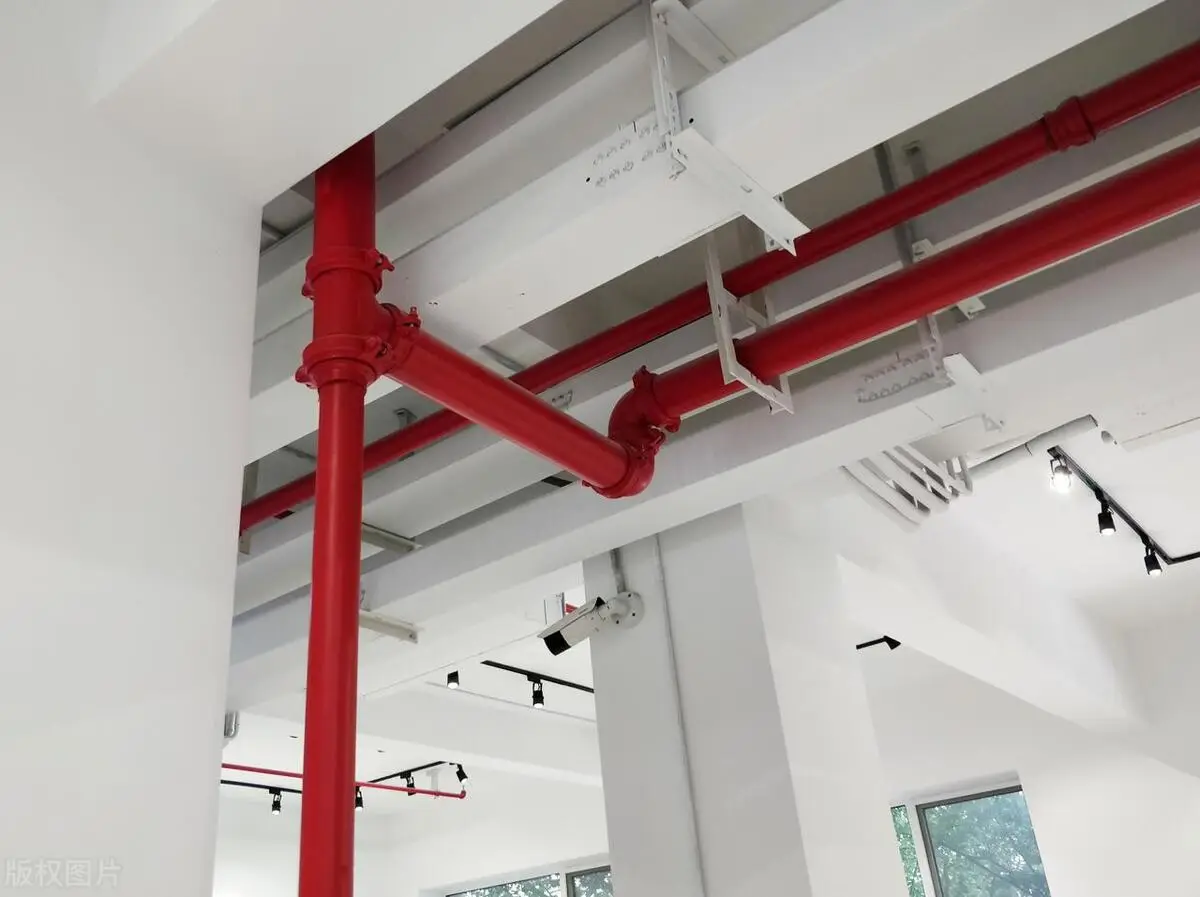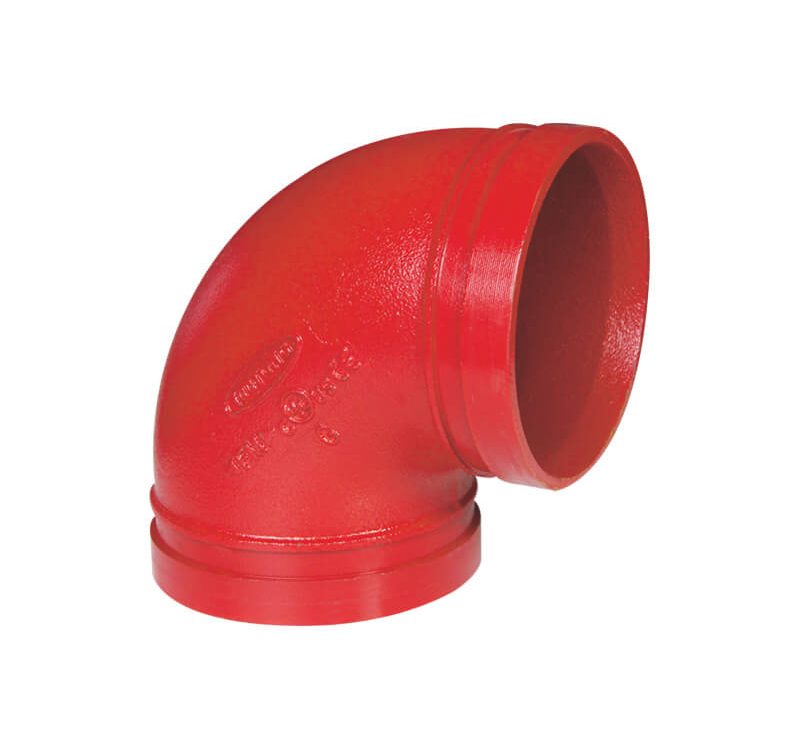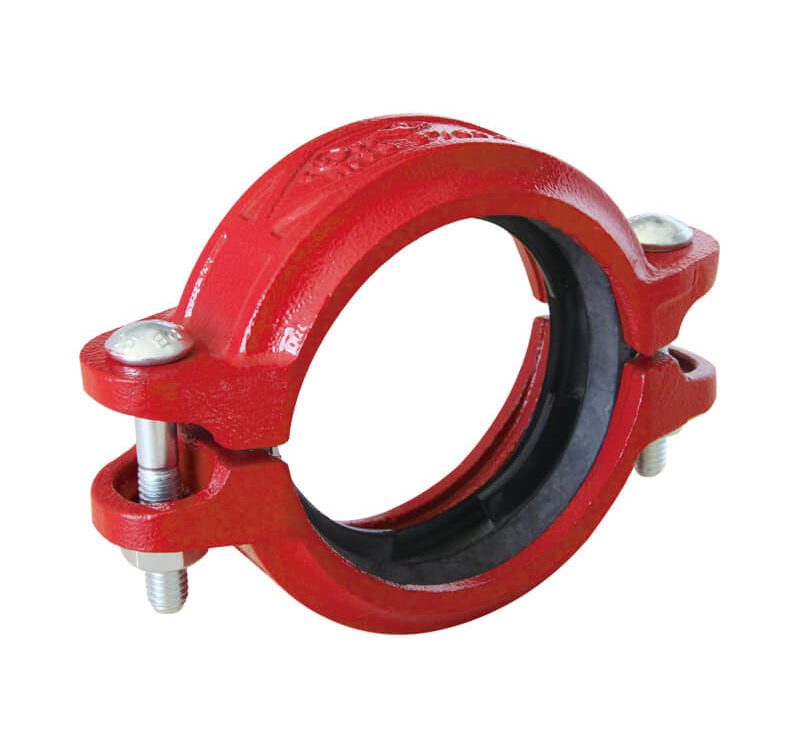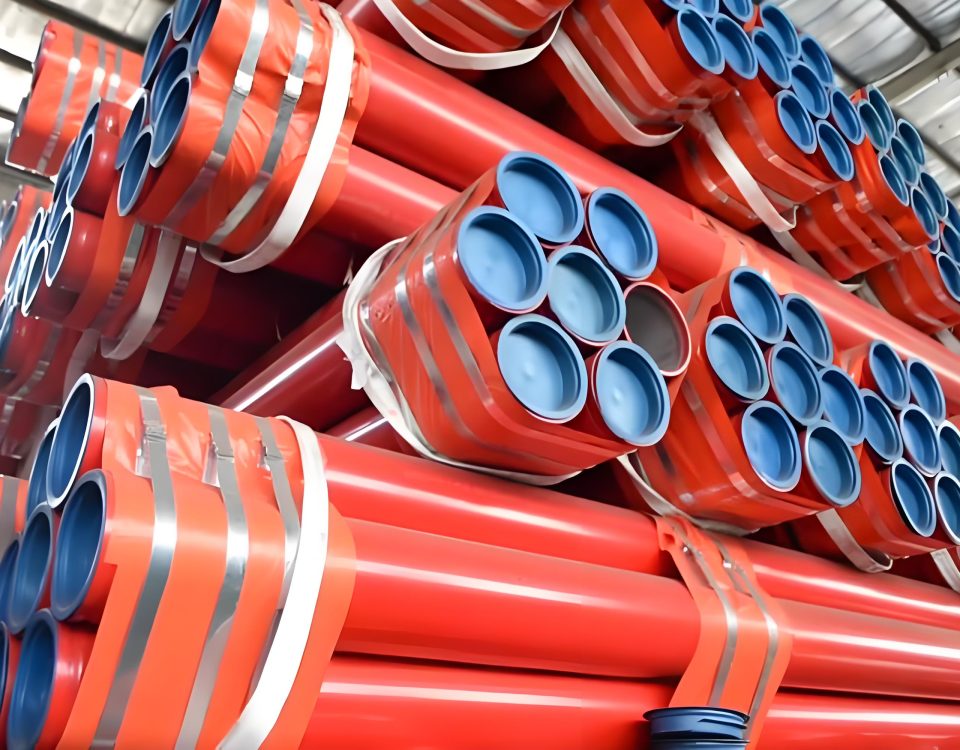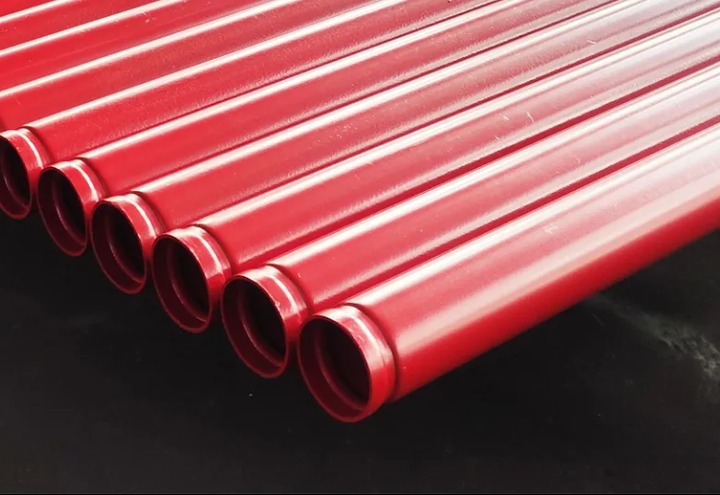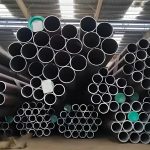
Petroleum Cracking Seamless Steel Pipe
June 7, 2025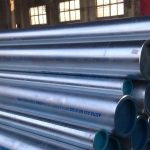
Galvanized Steel Fire Sprinkler Pipe
June 16, 2025ASTM A795 ERW Fire Fighting Pipe: A Comprehensive Guide
What Is ASTM A795 ERW Fire Fighting Pipe? Composition and Manufacturing
ASTM A795 ERW (Electric Resistance Welded) fire fighting pipe is a specialized carbon steel pipe designed for water-based fire protection systems, such as wet, dry, preaction, or deluge sprinkler systems. Developed by the American Society for Testing and Materials (ASTM), the A795 standard ensures high-quality, durable pipes for critical safety applications. ERW pipes are formed by rolling steel strips into a cylindrical shape and welding the seam using electric resistance heating, creating a strong, seamless-like structure with tight dimensional tolerances. The weld seam is heat-treated post-welding to eliminate untempered martensite, ensuring structural integrity, and the weld flash is removed from inner and outer surfaces for smooth flow.
The pipe’s composition typically includes carbon, manganese, phosphorus, sulfur, and silicon, with strict chemical requirements outlined by ASTM A795 to ensure strength, corrosion resistance, and durability. Available in two grades—Grade A and Grade B—Grade B is more common due to its mandatory post-weld heat treatment (minimum 1000°F or 540°C), enhancing strength and eliminating brittle martensite. The pipe comes in sizes from NPS (Nominal Pipe Size) ½ inch to 10 inches, with wall thicknesses for Schedule 10, 30, and 40, suitable for various pressure and flow requirements. It can be black (uncoated) or hot-dip galvanized for corrosion resistance, often painted red (RAL3000) to distinguish it in fire systems.
The ERW manufacturing process begins with flat steel strips, rolled into tubes and welded using high-frequency electric currents. This method offers precise dimensions and lighter weight compared to seamless pipes, reducing material costs. The pipe undergoes rigorous testing, including hydrostatic tests to ensure no leaks, nondestructive electric tests (NDT) as an alternative, and flattening tests to verify weld ductility and soundness. These tests ensure compliance with ASTM A795 and certifications like UL (Underwriters Laboratories) and FM (Factory Mutual), critical for fire safety standards.
Why is ASTM A795 ERW pipe ideal for fire fighting? Its high tensile strength (Grade B: minimum 60,000 psi) and corrosion-resistant coatings make it reliable for transporting water or fire suppressants under high pressure. Galvanized versions, with a minimum zinc coating of 1.5 oz/ft² (0.46 kg/m²), withstand humid or chemical environments, extending service life. The pipe’s versatility allows joining methods like rolled grooves, threading, welding, or fittings, accommodating various system designs. In 2024, the global fire protection market, valued at $70 billion, relies heavily on such pipes for sprinkler systems in commercial and residential buildings, per IBISWorld.
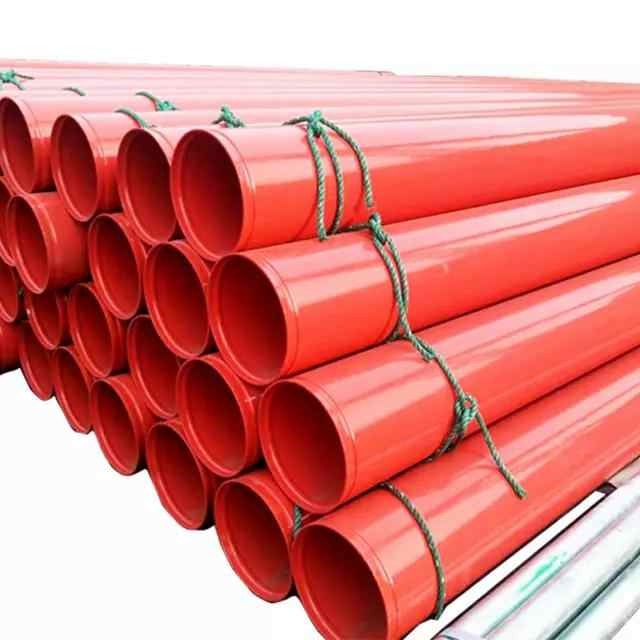
|
Product Name
|
Red paint to extinguish ERW carbon steel pipe/tube
|
|
Material Grade
|
Q195 = S195 / A53 Class A
Q235 = S235 / A53 B级/A500 A级/STK400 / SS400 / ST42.2
Q355 = S355JR / A500 B-level C-level
|
|
standard
|
ASTM A53 ( sch10; SCH40), ASTM A500, BS1387, EN39, BS1139, ISO65
GB/T3091、GB/T13793
|
|
Pipe surface
|
Galvanized, painted (black, red, grey or other) or rust-proof oiled
|
|
Pipe end
|
Plain end / Beveled end with plastic cap / Threaded ends with connection and cap / Grooved end
|
|
Certificate
|
ISO 9001 / BSI/ UL / FM
|
|
Trade terms
|
FOB/CFR/CIF/EXW/FCA
|
|
Payment Terms
|
30% & 70% T/T ; 100% LC at sight (others can be negotiated)
|
|
Delivery time
|
25-40 days after receiving deposit or L/C
|
|
brand
|
Youfa (hot sale)
|
|
Hot Market
|
Southeast Asia, South Asia, Middle East, Europe, Central and South America, Africa and Oceania
|
|
Regular size
|
||
|
Size (outer diameter)
|
Wall thickness
|
length
|
|
21 mm (1/2 inch)
|
1.4MM — 2.75MM
|
6m stock (or customized)
|
|
26 mm (3/4 inch)
|
1.4MM — 2.75MM
|
6M IN STOCK (OR CUSTOMIZED)
|
|
33.4 mm (1 inch)
|
1.4mm-3.5 MM
|
6M IN STOCK (OR CUSTOMIZED)
|
|
42.2 mm (1 1/4 in)
|
1.4 MM-3.5 MM
|
6M IN STOCK (OR CUSTOMIZED)
|
|
48.3 mm (1 1/2 in)
|
1.5mm-4.0mm
|
6M IN STOCK (OR CUSTOMIZED)
|
|
60.3 mm (2 inches)
|
1.6mm-4.0mm
|
6M IN STOCK (OR CUSTOMIZED)
|
|
73mm (2 1/2″) – ASTM Standard
|
1.8mm-5.5mm
|
6M IN STOCK (OR CUSTOMIZED)
|
|
76mm (2 1/2″) — BS standard
|
1.8MM — 5.5 MM
|
6M IN STOCK (OR CUSTOMIZED)
|
|
88.9 mm (3 inches)
|
2.0MM-5.5 MM
|
6M IN STOCK (OR CUSTOMIZED)
|
|
114 mm (4 in)
|
2.0MM-6.5 MM
|
6M IN STOCK (OR CUSTOMIZED)
|
|
141 mm (5 in)
|
2.5MM-6.5 MM
|
6M IN STOCK (OR CUSTOMIZED)
|
|
165 mm (6 in) – BS standard
|
2.5MM-7.5 MM
|
6M IN STOCK (OR CUSTOMIZED)
|
|
168.3 MM (6″) – ASTM Standard
|
2.5MM — 7.5 MM
|
6M IN STOCK (OR CUSTOMIZED)
|
|
219 mm (8 inches)
|
2.5MM-9.0 MM
|
6M IN STOCK (OR CUSTOMIZED)
|
|
108 mm – Special size
|
2.5MM-5.0 MM
|
6M IN STOCK (OR CUSTOMIZED)
|
|
133 mm – Special size
|
2.75MM-5.0 MM
|
6M IN STOCK (OR CUSTOMIZED)
|
|
159 mm – Special size
|
3.0MM — 7.75MM
|
6M IN STOCK (OR CUSTOMIZED)
|
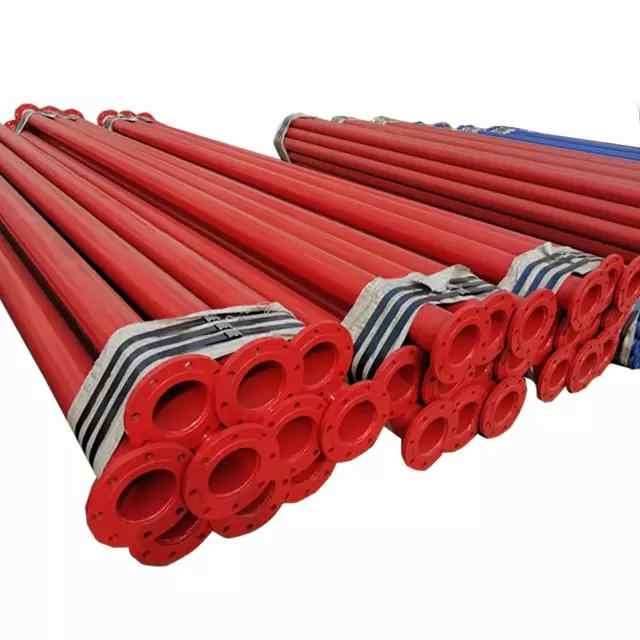
The following table summarizes ASTM A795 ERW pipe’s key properties:
| Property | Specification | Benefit |
|---|---|---|
| Material | Carbon steel (Grade A/B) | High strength, cost-effective |
| Size Range | NPS ½” to 10” | Versatile for various system sizes |
| Wall Thickness | Schedule 10, 30, 40 | Suitable for different pressures |
| Coating | Black or galvanized (1.5 oz/ft²) | Corrosion resistance, longevity |
| Tensile Strength (Gr. B) | ≥60,000 psi | Reliable under high pressure |
This table highlights the pipe’s adaptability, making it a cornerstone of fire protection systems, though quality depends on manufacturer adherence to standards.
Applications and Performance in Fire Protection Systems
ASTM A795 ERW fire fighting pipe is a critical component in water-based fire protection systems, designed to deliver fire suppressants like water, foam, or gas to extinguish fires in buildings, industrial facilities, or infrastructure. Its primary applications include fire main pipes, fire pump pipes, standpipes, and sprinkler branch pipes, serving systems like wet (water-filled), dry (air-filled), preaction (activated by detection), and deluge (open nozzles for high-hazard areas). These systems are mandated by building codes, such as those from the National Fire Protection Association (NFPA), ensuring rapid fire response in settings from warehouses to high-rise offices.
The pipe’s performance stems from its mechanical properties and manufacturing precision. With a yield strength of at least 35,000 psi for Grade B, it withstands high-pressure water flows, critical during fire emergencies. Its ERW construction ensures tight dimensional tolerances (outer diameter variation ±1% for NPS 2” and larger), allowing seamless integration with fittings, valves, or sprinklers. The heat-treated weld seam, free of untempered martensite, prevents cracking under stress, a common failure in inferior pipes. A 2023 Journal of Materials Engineering study noted that ERW pipes with post-weld heat treatment had 20% higher fatigue resistance than untreated welds, enhancing reliability.
Corrosion resistance is vital, as fire pipes may sit dormant for years yet must function flawlessly when activated. Hot-dip galvanizing, applying a zinc layer, protects against rust in humid or coastal environments, with studies showing galvanized pipes lasting 30-50 years in typical conditions. Alternatively, black pipes with epoxy or FBE (Fusion Bonded Epoxy) coatings offer similar protection, often used indoors. The red paint (RAL3000) not only identifies fire pipes but also adds a protective layer, reducing external corrosion.
Testing ensures performance. ASTM A795 mandates hydrostatic testing to detect leaks, with pressures up to 1000 psi depending on size, or NDT to identify weld imperfections without damaging the pipe. Flattening tests assess weld ductility, ensuring the pipe can endure deformation without fracturing. UL and FM certifications, achieved by manufacturers like Youfa Steel, verify compliance with fire safety standards, critical for insurance and regulatory approval.
In practice, ASTM A795 ERW pipes are installed in diverse settings. For example, a 6-inch NPS pipe with Schedule 40 thickness (0.280 inches) can handle flows up to 500 gallons per minute, suitable for large commercial sprinklers. Their lightweight design (compared to seamless pipes) reduces installation costs, while joining methods like grooved ends or threading allow quick assembly. However, improper installation, such as bending at ambient temperature with an inner diameter less than 12 times the outer diameter, can weaken the pipe, per ASTM A795.
The table below compares ASTM A795 ERW pipe applications:
| Application | Pipe Type | Key Feature |
|---|---|---|
| Fire Main Pipe | Schedule 40 | High pressure capacity |
| Sprinkler Branch Pipe | Schedule 10 | Lightweight, cost-effective |
| Standpipe | Galvanized | Corrosion resistance |
| Fire Pump Pipe | Grade B | Enhanced strength, durability |
This versatility ensures ASTM A795 ERW pipes meet diverse fire protection needs, though proper selection and installation are critical.
Standards, Certifications, and Quality Assurance
ASTM A795 ERW fire fighting pipe’s reliability hinges on strict standards, certifications, and quality assurance processes, ensuring safety in life-critical applications. The ASTM A795/A795M standard, updated in 2021, specifies requirements for black and hot-dip galvanized welded and seamless steel pipes for fire protection, covering sizes NPS ½” to 10”, wall thicknesses (Schedule 10, 30, 40), and chemical composition (e.g., max 0.25% carbon for Grade B). It defines two grades (A and B) and three types: Type E (ERW), Type F (furnace-welded), and Type S (seamless), with Type E being the most common due to its cost-effectiveness and strength.
Grade B requires post-weld heat treatment to 1000°F (540°C) to eliminate untempered martensite, ensuring a ductile, crack-resistant weld. The standard mandates tight dimensional tolerances: wall thickness must not vary more than 12.5% from nominal, and outer diameter by ±1% for NPS 2” and larger. Pipes undergo rigorous testing: hydrostatic tests check for leaks, NDT (e.g., eddy current testing) detects weld flaws, and flattening tests verify weld soundness, rejecting pipes with incomplete welds or laminated material.
Certifications like UL and FM are critical, verifying compliance with fire safety standards. UL tests pipes for pressure, corrosion, and flow, while FM ensures performance in extreme conditions. Manufacturers like PandaPipe and Youfa Steel, with over 25 years of production experience, achieve these certifications through advanced equipment, such as U.S.-made high-frequency welding machines, and comprehensive quality control (QC) by staff with 5+ years’ experience. NFPA codes, such as NFPA 13, further dictate installation requirements, ensuring system reliability.
Quality assurance extends to coatings. Galvanized pipes must have a uniform zinc coating (1.5 oz/ft²), free of blisters or heavy deposits, to prevent corrosion. Black pipes may use FBE or epoxy coatings, applied via curing processes, to enhance durability. Each pipe is traceable via serial numbers, allowing manufacturers like WLD Steel to track production batches for accountability. Buyers can request chemical analysis of two pipes per 500 lengths to verify composition, per ASTM A795.
Challenges include ensuring consistent quality across suppliers. Lower-cost manufacturers may skimp on heat treatment or coatings, reducing longevity. A 2024 Journal of Pipeline Engineering study found that substandard ERW pipes failed 15% sooner in corrosion tests than certified ones. Reputable suppliers, partnered with major steel mills, mitigate this through advanced coating measures and QC.
The table below outlines ASTM A795 quality requirements:
| Requirement | Specification | Purpose |
|---|---|---|
| Chemical Composition | Max 0.25% carbon (Gr. B) | Ensures strength, corrosion resistance |
| Testing | Hydrostatic, NDT, flattening | Verifies leak-proof, sound welds |
| Coating | Zinc (1.5 oz/ft²), FBE, epoxy | Prevents corrosion |
| Certifications | UL, FM, NFPA-compliant | Guarantees fire safety compliance |
These standards ensure ASTM A795 ERW pipes deliver safety and performance, though buyers must verify supplier credentials.
Comparison with Other Fire Fighting Pipes (ASTM A53, A135)
ASTM A795 ERW fire fighting pipe is one of several standards for fire protection, alongside ASTM A53 and A135, each with distinct features. Understanding these differences helps engineers and contractors select the right pipe for specific applications. ASTM A795 is tailored for fire protection, covering black and galvanized ERW and seamless pipes in NPS ½” to 10”, with Schedule 10, 30, and 40 thicknesses. Its focus on fire systems ensures optimized corrosion resistance and pressure handling, with Grade B’s heat-treated welds offering superior durability.
ASTM A53 covers black and galvanized welded and seamless steel pipes for mechanical, pressure, and structural applications, including water, steam, and gas conveyance. Available in Grades A and B, it overlaps with A795 in fire protection but is less specialized. A53 pipes have similar chemical compositions (max 0.30% carbon for Grade B) but looser dimensional tolerances (e.g., ±12.5% wall thickness variation vs. A795’s 12.5% maximum). A53 is heavier, with Schedule 40 thicknesses often exceeding A795’s lightweight options, increasing costs.
ASTM A135 is specific to ERW steel pipes, also used for fire protection, but limited to this welding method. It offers Grades A and B, with similar chemical requirements to A795 but no mandatory post-weld heat treatment, potentially reducing weld durability. A135 pipes are designed for water conveyance, with less emphasis on corrosion resistance, making them suitable for less demanding fire systems. Their wall thicknesses align with Schedule 10 and 40, but they lack A795’s versatility in joining methods like grooved ends.
Performance-wise, A795’s galvanizing and heat treatment provide 20% better corrosion resistance than A135 in humid environments, per a 2023 Materials Degradation study, while A53’s heavier construction suits high-pressure non-fire applications. A795’s UL/FM certifications are more prevalent in fire systems, ensuring compliance with NFPA 13, unlike A53, which may require additional testing. Cost-wise, A795 ERW pipes are competitive ($0.50-1.00 per foot for NPS 2”), compared to A53 ($0.60-1.20) and A135 ($0.45-0.90), per 2024 industry estimates.
The table below compares these standards:
| Standard | Application | Key Feature | Cost per Foot (NPS 2”) |
|---|---|---|---|
| ASTM A795 | Fire protection | Heat-treated welds, UL/FM certified | $0.50-1.00 |
| ASTM A53 | Multi-purpose | Heavier, broader applications | $0.60-1.20 |
| ASTM A135 | Fire protection, water | ERW-only, no heat treatment | $0.45-0.90 |
A795’s specialization makes it the preferred choice for fire fighting, balancing cost, durability, and compliance.
ASTM A795 ERW fire fighting pipe is a vital component in water-based fire protection systems, offering strength, corrosion resistance, and compliance with stringent safety standards. Its ERW manufacturing ensures precise dimensions and cost-effectiveness, while heat-treated welds and galvanizing enhance durability. Applications range from sprinkler branches to fire mains, supported by rigorous testing and UL/FM certifications. Compared to ASTM A53 and A135, A795 excels in fire-specific performance, making it a top choice for engineers and contractors. By selecting reputable suppliers and adhering to NFPA codes, users can ensure reliable, long-lasting fire protection, safeguarding lives and property in diverse settings.

